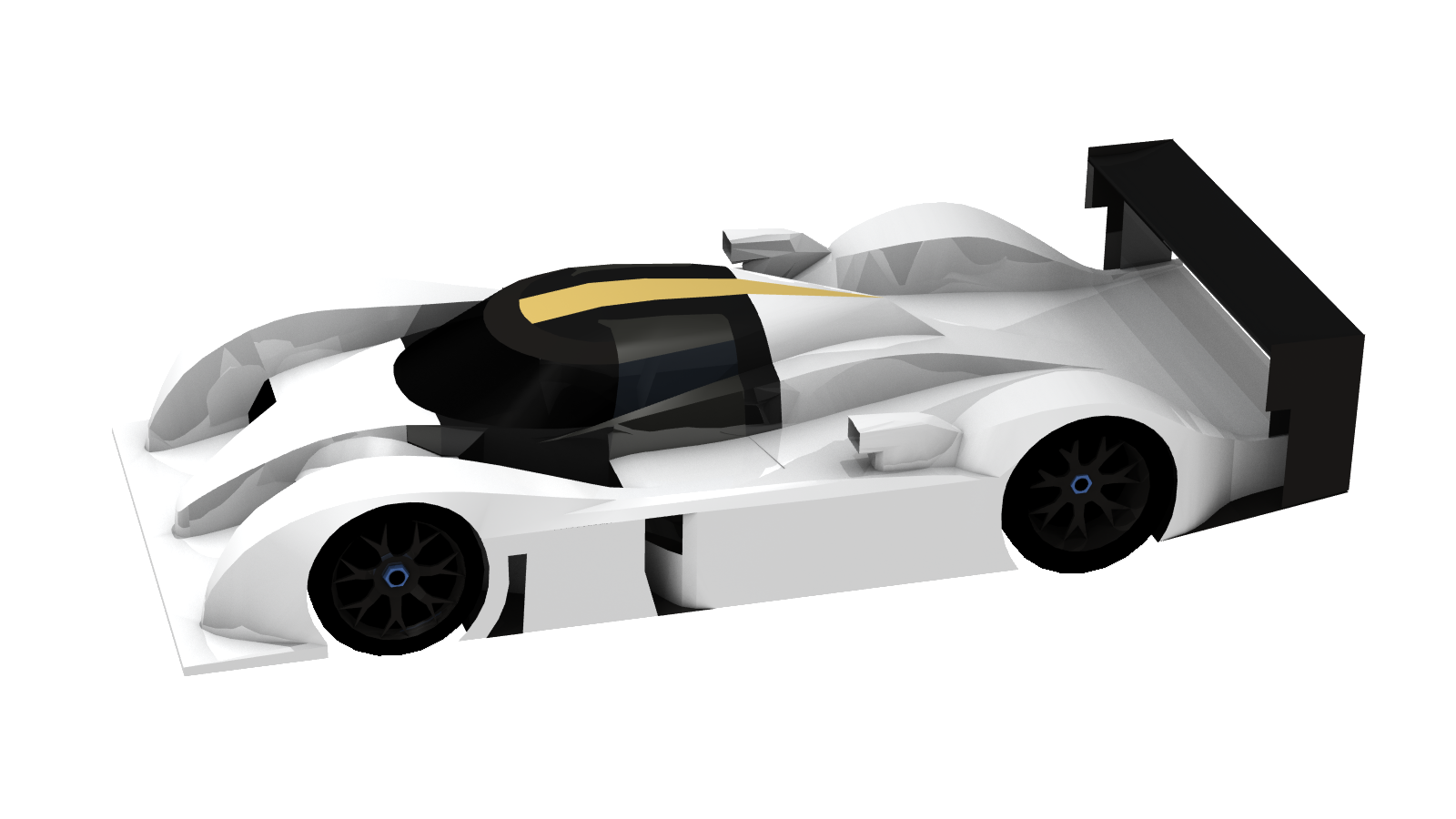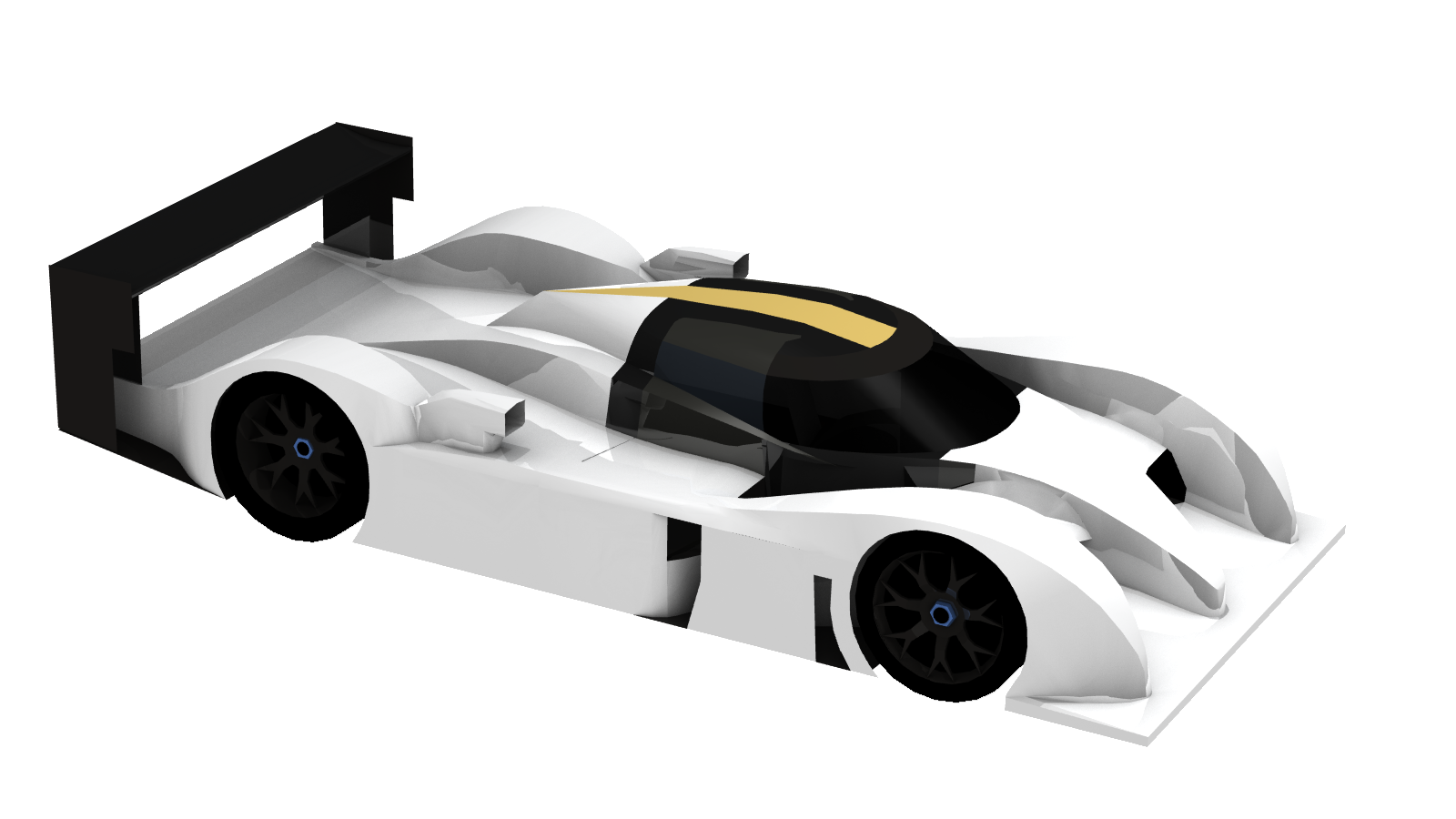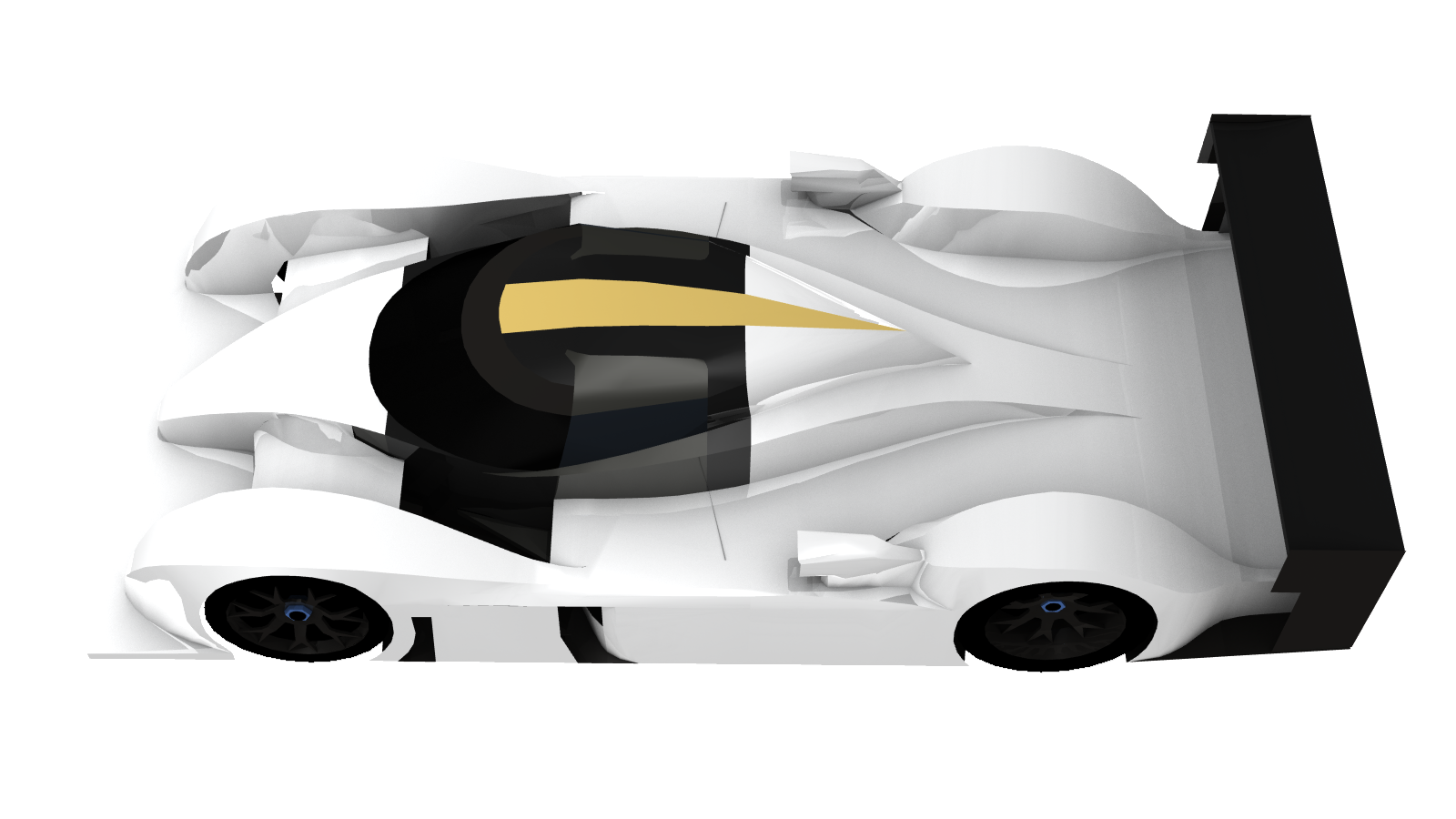
The 2003 Bentley Speed 8 was created specifically to win Le Mans. It was the culmination of a several-year effort by the team and designer Peter Elleray. Not until many years later would some of the aero trickery emerge from its shroud of mystery under the menacing bodywork.
Based on the relatively few detail images available at the time, I puzzled over how the design held together. China pencil sketches on newsprint evolved into detailed technical drawings as the basis for this ambitious paper-model project. It would be a masterpiece of impossibly flowing forms.

< parts projections half-image >
This car and this project was something of an obsession for me. The work was a focus which helped pull me through some trying times. But eventually, after probably hundreds of hours of work, I had to put a stop to it.
This was before I worked in CAD, and went as far as hand-engineering a full tub kit as well as most of the complex bodywork of the nose and roof. Because the work was completely manual, making any changes meant painstakingly re-calculating all the segments that made up the all interrelated parts.
< old test-build photos as half-image >
The model became so complex that as new details were uncovered and changes needed to be made, it was just too much work. So I tabled it. This was the last of my hand-calculated model designs, and a motivation to take up working in Metasequoia (a CAD app optimized for paper model design).
I was left with highly accurate and comprehensive working drawings of the chassis, bodywork, and drivetrain. The panel splits and tab strategies were all worked out for a reasonable paper model build. It just needed time to get re-constructed in CAD.
< production drawings as half-image >
This late February morning, the Bentley CAD model started as the CAD file for my Peugeot 908. Completely re-worked based on those 10-year-old drawings, the Bentley is rough but it's a start. Again.





